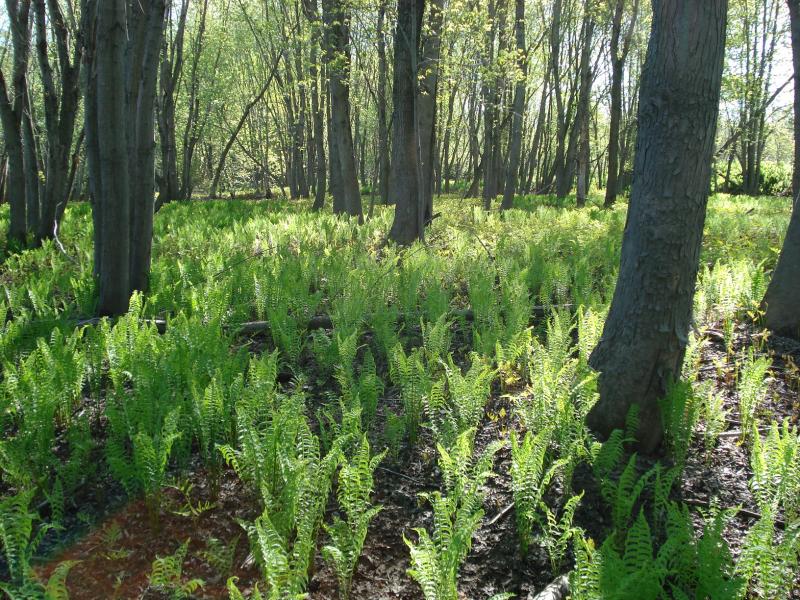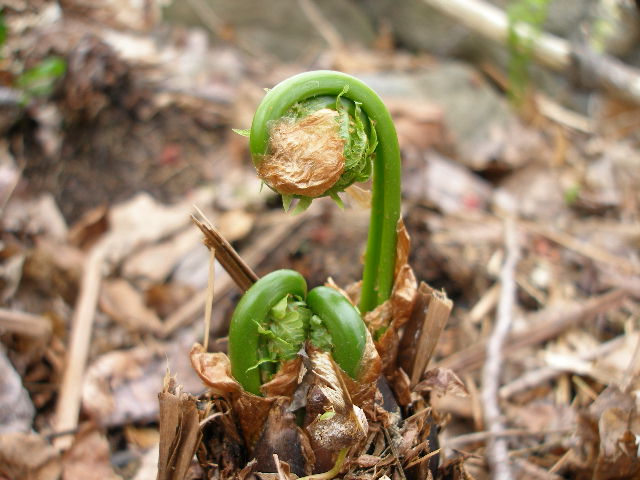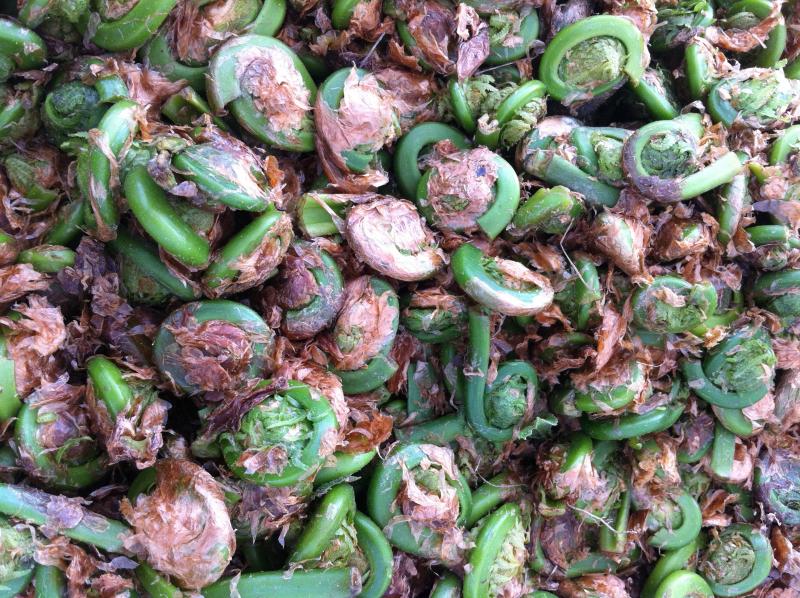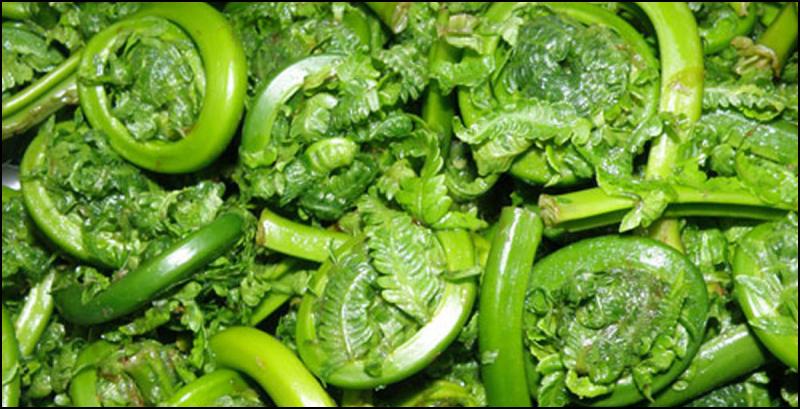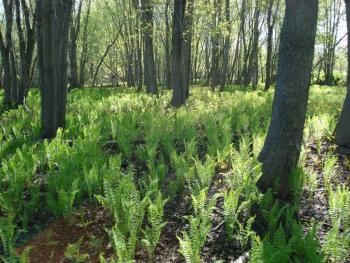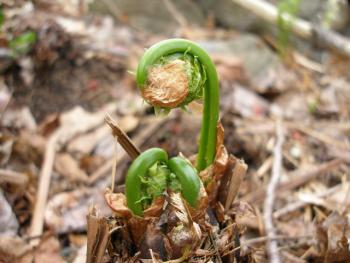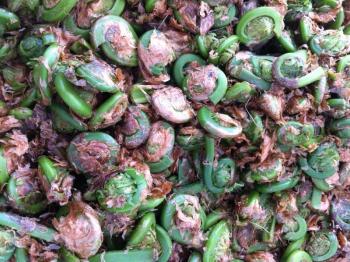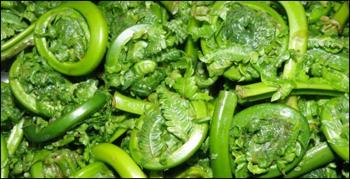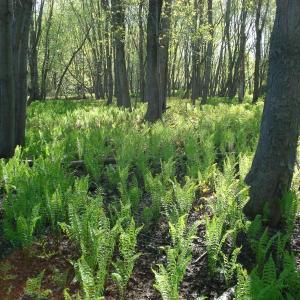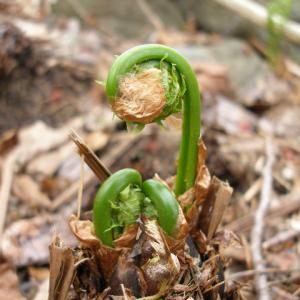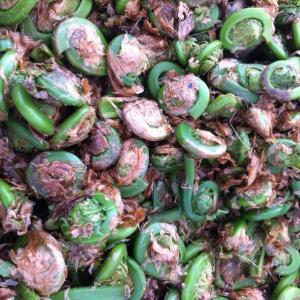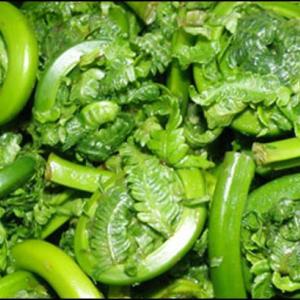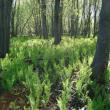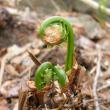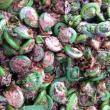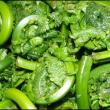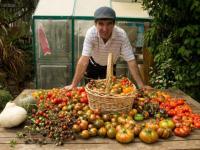Foragers fancy fiddleheads for flavor and fun
Like a coiled fern waiting to spring (ha, I made a funny) and it’s almost here. Fiddlehead harvesting is a right of spring. I’ve heard people talk of secret fiddlehead patches; the locations are guarded closer than what brand of cigarette the president smokes. The colloquial name comes from the fact that their coiled form looks like the top of a violin, or fiddle.
Never consume an uncooked fiddlehead. Wash and steam or boil your fiddleheads before consuming regardless of where you get them.
Fiddleheads are the young coiled fronds of the ostrich fern (Matteuccia struthiopteris). Nearly all ferns have fiddleheads, but those of the ostrich fern are different. Ostrich fern fiddleheads, which are about an inch in diameter, are identified by the brown papery covering on the uncoiled fern. And by the deep, U-shaped groove on the inside of the stem.
Fiddleheads are nutritious. They contain fiber, Vitamin C, Vitamin A, and omega-3 fatty acids. They are low in sodium, and high in potassium.
Ostrich ferns grow on the banks of rivers, streams, and brooks in late April, May, and into early June. Fiddleheads emerge in clusters. There can be anywhere from three to seven fiddleheads on each fern crown. Fiddleheads are best harvested at about 2 to 6 inches tall. Make sure you get a portion of the stem when you pick them; there’s a lot of flavor in the stem.
It’s as important to know how many fiddleheads to pick, as it is knowing the right fiddleheads to pick.
Do not pick more than half of the emerged fiddleheads from each crown, then leave it alone and let it grow. Picking all the new shoots will cause the plant to die. Over-picking is not sustainable gardening. Fiddleheads are a nonfarmed food. Maintaining sustainable harvesting methods is important for everyone to practice. As their popularity grows, we need to ensure generations to come will be able to harvest fiddleheads.
Fiddleheads can be traced back to Native Americans and they appear to have been as popular then as they are now. Early Americans thought the unopened ferns held some medicinal value. In Europe, they can be traced back to the Middle Ages and are even found in India and Asia. Sorry to tell you, but you don’t have a corner on the market, though Maine is considered to be one of the richest areas for harvesting, next to New Brunswick, which claims to be the fiddlehead capital of the world.
Under no circumstances should a fiddlehead be consumed raw. The fern fronds should be tightly curled. If the fronds are old and unfurled, don’t eat it. Fiddleheads may harbor microbes, and should be washed and cooked before eating. There is a toxin, known as shikimic acid in fiddleheads, that you don’t under any circumstances want to ingest. Fiddlehead sickness can include diarrhea, nausea, vomiting and abdominal cramps.
If you’re not sure about what to pick, or can’t find a secret patch you can always wait and pick up some fresh picked fiddleheads in the grocery store, or market. Regardless of how you get your fiddleheads there are some hard fast rules in their preparation.
The papery covering on fiddleheads must be removed first. It is easiest to remove the covering when the fiddlehead is dry. Simply rub the covering loose and pick it off. Another way is to get a colander and wash the fiddlehead under running water while picking at the covering and let the water wash it away. I’ve heard stories of people picking at the covering in front of a fan, but I would reserve this method to do outdoors.
After cleaning the fiddleheads thoroughly wash them under running water. It doesn’t matter what you intend to do with the fiddlehead. They must either be steamed or boiled before you can do anything else with them. Sautéing and frying, or microwaving, do not kill the microbes in the fiddleheads, or remove the shikimic acid; i.e., diarrhea, nausea, vomiting and abdominal cramps.
Bring lightly salted water in a pot to a rolling boil and add your washed fiddleheads. The water should fully cover fiddleheads when added. Bring the water back to a steady boil and hold for 10 minutes. Discard the water and repeat the process boiling for another 10 minutes.
To steam, bring a small amount of water to boil using your favorite steaming method or device. Add washed clean fiddleheads and steam for 10 to 12 minutes. After the fiddleheads are cooked the sky is the limit.
Stir-fry in a little butter with some chopped onion, garlic and salt and pepper to taste. Use as a side dish with meat, poultry, or fish. I like to put the fiddleheads in some vinegar (I prefer rice) and let them marinate for a few hours. You can add some onion, tomato, or chilies to give it a little zing.
And my personal favorite, bacon. Everything is better with bacon. Try a bacon, fiddlehead and goat cheese omelet for breakfast and you may never look at the world the same way again.
So let’s review:
1. There is a deep, U-shaped groove on the inside of the smooth stem and there are thin, brown, paper-like scales covering the newly emerging fiddleheads. In contrast, bracken fern fiddleheads are fuzzy, and lack the brown paper-like covering and U-shaped groove on the inside of the stem.
2. Pick no more then half the fronds on the crowns.
3. Never consume an uncooked fiddlehead. Wash and steam or boil your fiddleheads before consuming regardless of where you get them.
4. Bon Appétit!
Source for nutritional facts
Chris Wolf can be reached at news@penbaypilot.com
Event Date
Address
United States

